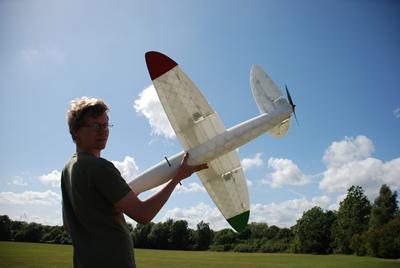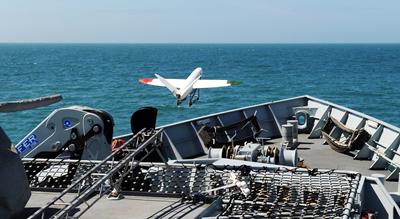Aerospace engineers at the University of Southampton designed, built and flew the world’s first ‘printed’ aircraft in 2011. The entire structure of Southampton University Laser Sintered Aircraft (SULSA) was printed, from the wings to the integral control surfaces.
SULSA was printed on a laser sintering machine, which can construct plastic or metal objects by building them up layer by layer, each one just 100 micrometres thick. The unmanned aerial vehicle (UAV) can be assembled without tools, using ‘snap fit’ techniques, avoiding the need for extra fasteners.

As the nature of the production process avoids conventional manufacturing techniques and materials, engineers can produce highly-tailored aircraft at a much lower cost and in a fraction of the time. Thanks to this, SULSA was designed, printed and built within one week, whereas this would usually take months. Without the need for the cutting or grinding of metal, this process also allows for far greater design freedom. If new parts or design upgrades are needed, these can also be printed and ready for use within a few days.
Professor Jim Scanlan, Professor of Aerospace Design, explains: "The aircraft's structure is very stiff and lightweight, but very complex. If it was manufactured conventionally it would require a large number of individually tailored parts that would have to be bonded or fastened at great expense."
SULSA’s airframe was designed by postgraduate research students Jeroen van Schaik and Mario Ferraro. SULSA weighs only 3kg, with a wing span of 1.2m and a cruise speed of 50 knots (58mph) and can fly almost silently.

In the summer of 2015, University of Southampton engineers test flew SULSA from the front of a Royal Navy warship. The UAV was launched from HMS Mersey into the Wyke Regis Training Facility in Weymouth before landing safely on Chesil Beach. The test demonstrated the potential of small UAVs for use in a maritime environment, and further validated their capability for replacing more complex machines. SULSA, and other unmanned aircraft from the University will be flown at the 2016 Farnborough Air Show.
Professor Andy Keane, says: “The key to increased use of UAVs is the simple production of low cost and rugged airframes – we believe our pioneering used of 3D printed Nylon has advanced design thinking in the UAV community world-wide.”
The laser sintering technique has proved that it has a huge potential within the aviation industry, for racing car design and for customised medical implants.
In 2014, our postgraduate engineering students developed the idea of 3D printed aircraft further, when they designed the world’s first 3D printed rocket-powered space plane.
Other University of Southampton sites
Links to external websites
The University cannot accept responsibility for external websites.